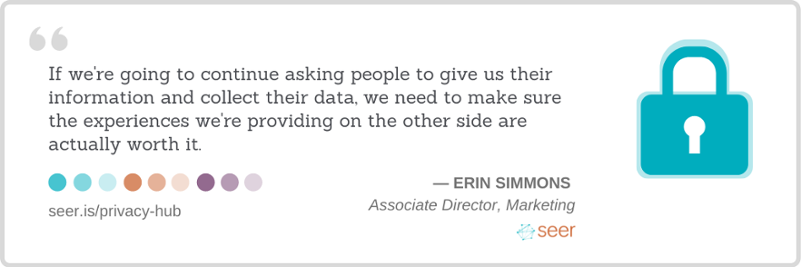Ever since Google announced in 2021 its eventual deprecation of the use of third-party cookies within Chrome, Seer has been diligently following the progress.
💡 Google recently announced a pivot away from FLoC (their original solution to interest-based advertising in Chrome) -- introducing "Topics" instead.
We’ve compiled our thoughts and recommendations below regarding the most recent update in this space:
How Was Google Going to Use FLoC?
"FLoC", or Federated Learning of Cohorts, was the audience categorization system that Google originally proposed using within Chrome. The idea had been to empower digital advertisers to target users with relevant ads once third-party cookies were removed from the browser.
The FLoC approach would group users into similar groups (or yes; flocks) based on their interests. Chrome could then identify FLoCs and match ads appropriately.
The intention with the FLoC approach was to protect user privacy through an anonymized cohort of users, but many industry experts and competing browsers found faults in this approach. That is what led to the creation of Topics.
How is Google Now Going to Use Topics?
Third-Party Cookies (left) vs Topics (right):

Image Source: Google
Google has curated a list of 300 initial Topics such as fitness, real estate, etc. that align with a user’s interests. Advertisers can then target Topics to send ads to a more relevant audience. However, there are a few nuances with the Topics system:
Topics are matched to users at the browser and device level.
- If a family shares a computer, users won't be distinguished from one another
- If someone shops across devices, advertisers may lose tracking on their cross-device activity (if not using Google Signals)
Each Topic is only associated with a browser device combination for three weeks at a time.
- It’s possible that advertisers with longer lead times and buyer journeys will need to develop a closed-loop strategy if Topics remains Google’s categorization method of choice
A user’s browser-device combination is assigned only five Topics maximum at one time.
- Each time a user visits a participating site, one topic from each of the past three weeks is selected to represent that user’s interests. This provides a site with three Topic options when targeting an individual user within a session. The visual below should help to break this down further:

Sites match to Topics using Google’s machine learning capabilities.
- If a new site is not recognized, Google will use the domain name (not site content) to determine its relevant Topic association(s)
- Both users and sites can opt in or out of Topics entirely at any time
💡 Related: Get to know the new Topics API for Privacy Sandbox
What Does This Mean For Advertisers?
Chrome still provides cookies for the time being (the original 2022 timeline was pushed back to 2023). However:
We recommend that advertisers begin preparing for a world where Topics are potentially the main targeting method available for Chrome.
Outside of Chrome’s third-party targeting capabilities, there are many avenues you can take to prepare for a cookieless future.
Foremost, it will be important to leverage first-party data wherever possible in your MarTech stack to ensure you're capturing valuable data about your online users without sacrificing their trust.
At the end of the day, we are ALL navigating this new world of privacy together -- the more we arm ourselves with an understanding of the changing landscape, the better we can serve users while keeping our own marketing objectives in mind.
- Have specific questions about your website? Reach out -- we'd love to help!
- Want to share your thoughts about Topics? Hit us up on Twitter (@SeerInteractive)



